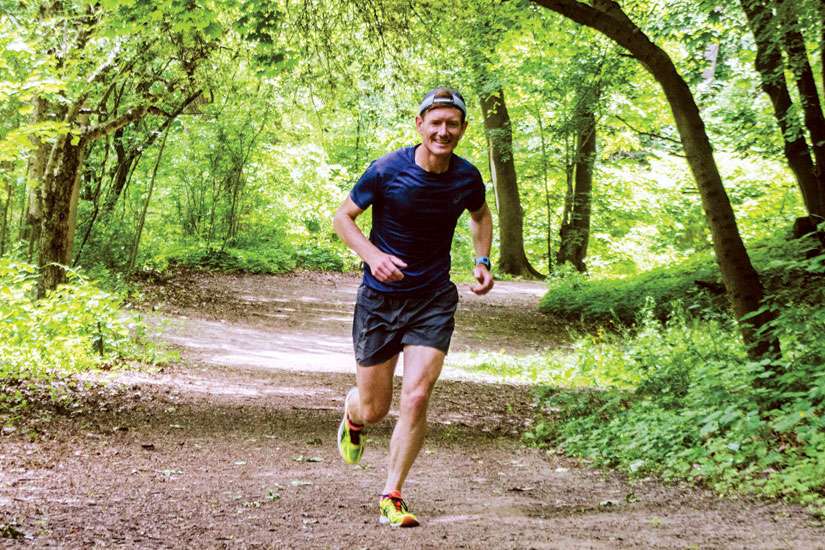On June 21, the day which offers the most minutes of sunlight during the year, the communications manager with the Archdiocese of Toronto will be competing in the ASICS Beat the Sun invitational relay race. Steinburg is one of 24 amateur runners who will be partnered with professional runners to form eight six-person-relay teams. Each team is named for the region where its runners come from, with Steinburg racing for one of the two Team Americas.
Beginning in Chamonix, France, at the first sign of daylight, the runners will attempt to tackle the course, a 130-km loop on Europe’s second highest peak, which spans three countries — France, Switzerland and Italy — before the sun sets almost 16 hours later. The race is broken down into 12 segments with each team member running two legs.
“There are two goals,” said Steinburg. “To compete against each other and also to compete against nature. You are not racing the clock as much as you are racing against nature as the sun moves across the sky.”
Considered one of the toughest events of its kind, only two teams have successfully beaten the sun in the race’s history. The course features various terrains from barren icy glaciers found at the mountain’s 4,800-metre peak to valley’s dense with vegetation and humidity.
Steinburg’s journey began back in February when he, along with 58,000 amateur runners, submitted an online application to compete in the race. In April Steinburg learned he was one of 50 semi-finalists selected from among the 58,000 applicants.
From there, an online voting process whittled the number down and Steinburg was among 24 finalists selected to travel to France.
He’s been hitting the asphalt and trails six days a week including twice a week during his lunch hour. Steinburg lives in Barrie, Ont., which provides him with plenty of trails through the woods to train on, but finding somewhere in Southern Ontario to condition himself to such rapid elevation increases proved near impossible.
Before starting to take his training regimen down a notch to allow his body to regain full health before the big race, Steinburg, who departs for Europe June 15, was running about 120 km a week.
“At this point as a runner with a big race ahead of you, you start to taper down on your training and you start to get less feedback from your body about how fit you are so I joke with friends that the big goal right now is to avoid falling in the valley of self-doubt,” he said. “Really the work is done and what we do now is maintain our fitness and mentally prepare for it.”
He hopes this extensive training combined with his eight years experience in distance racing — which includes six appearances at the Boston Marathon, a first-place finish at the Sulphur Springs 50km trail trace in 2014 and a number of other top-ten finishes — will guide him to one of his best performances yet. And if it doesn’t play out that way, that’s okay with Steinburg, for running is about a lot more than medals, ribbons and records.
“Running for me fills a lot of different needs,” he said. “First of all it is a great stress relief, it really helps me manage my day and maintain balance. Really that happens when it is just person with nature.”


